Best dehumidifier 2025: beat damp and mould
Tackle damp like a pro with the best dehumidifiers for home use
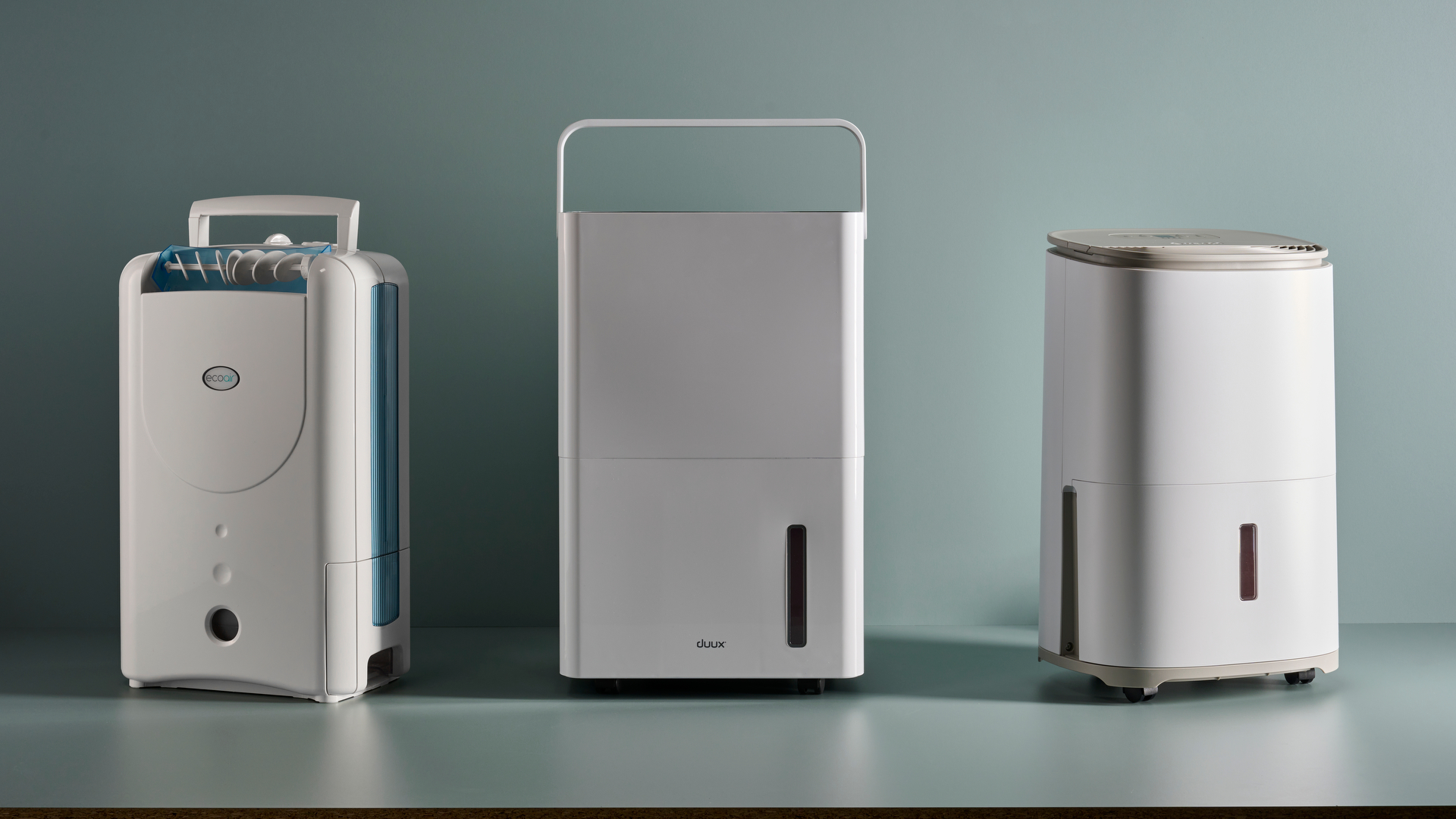
If you want to cut moisture in your home, you need the best dehumidifier. They are more useful in winter, but if your home is prone to serious damp and mould, running one – or several – in the summer months may also be essential. In most cases, something from this best dehumidifier list will be sufficient to significantly reduce bathroom and utility room condensation, reducing your risk of mould-infested walls.
Even well ventilated homes can suffer from condensation and, subsequently, mould on walls and ceilings. This is especially so if you hang your washing to dry on or near the radiators. And let's face it, we all do.
Not to be confused with the best humidifiers, dehumidifiers can help reduce the amount of bacteria in the air, but their main purpose is to beat damp. We’ve gathered together a tidy selection of the best dehumidifiers that do the job better than most. All of these dehumidifiers perform exceptionally well and are highly regarded by both users and professional reviewers.
But for our money, the new, compact MeacoDry ABC takes top spot for exceptional, low-cost moisture extraction, hotly followed by its larger stablemate, the Meaco 25L Ultra Low Energy. Don't discount the keenly-priced and very efficient Electriq CD12LE though.
Improve your home's air quality even more with the best air purifiers and keep it cool with the best fans, or if you're fan of the British brand, the best Dyson fans. Can't go wrong with those ones, can you?
The top three

Best dehumidifier overall
The MeacoDry Arete One is powerful, easy to use and energy efficient. It's older than its successor but the original is still our favourite.
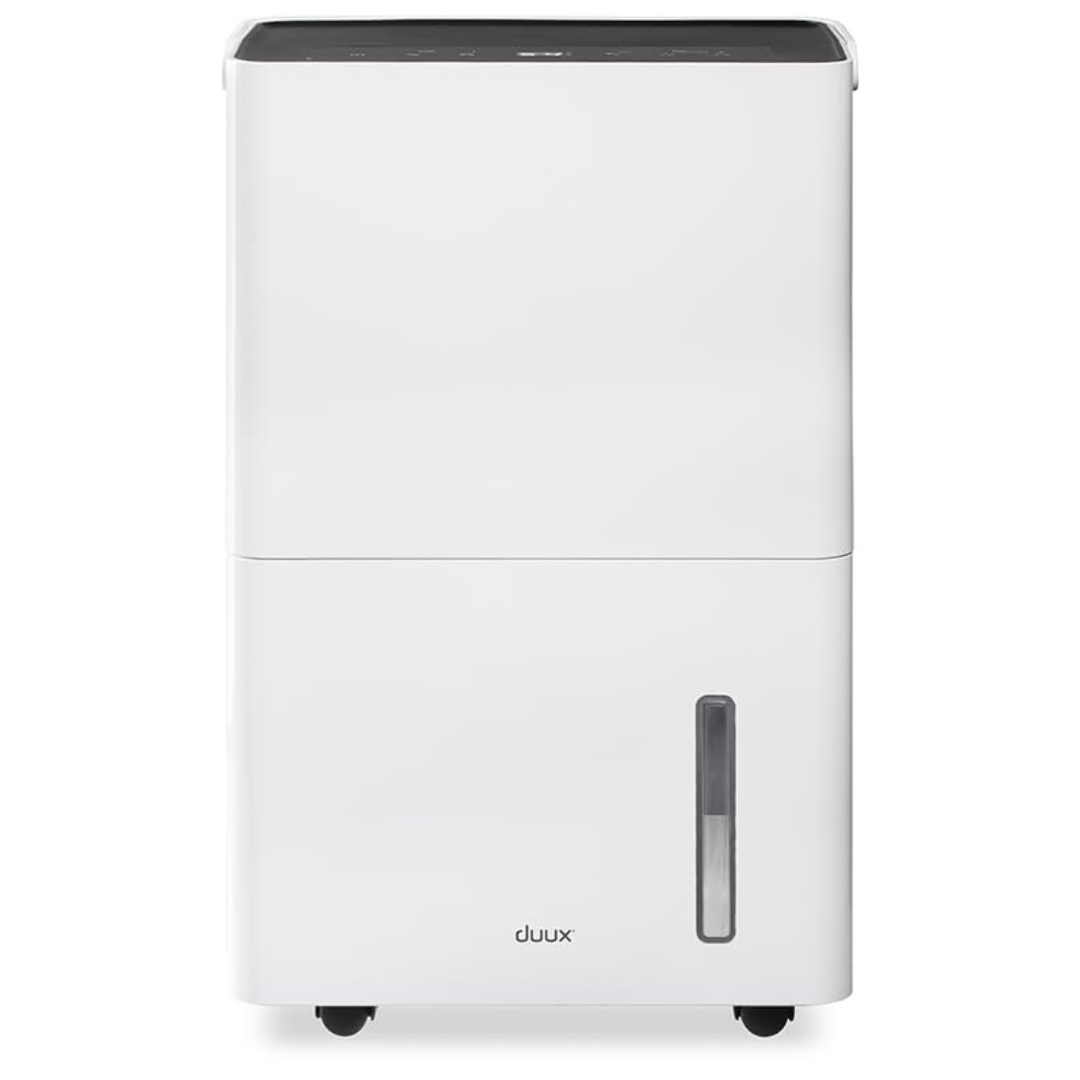
Best smart dehumidifier
The Duux Bora Smart 20L Dehumidifier is a great option if you want to add a dehumidifier to your smart home ecosystem.
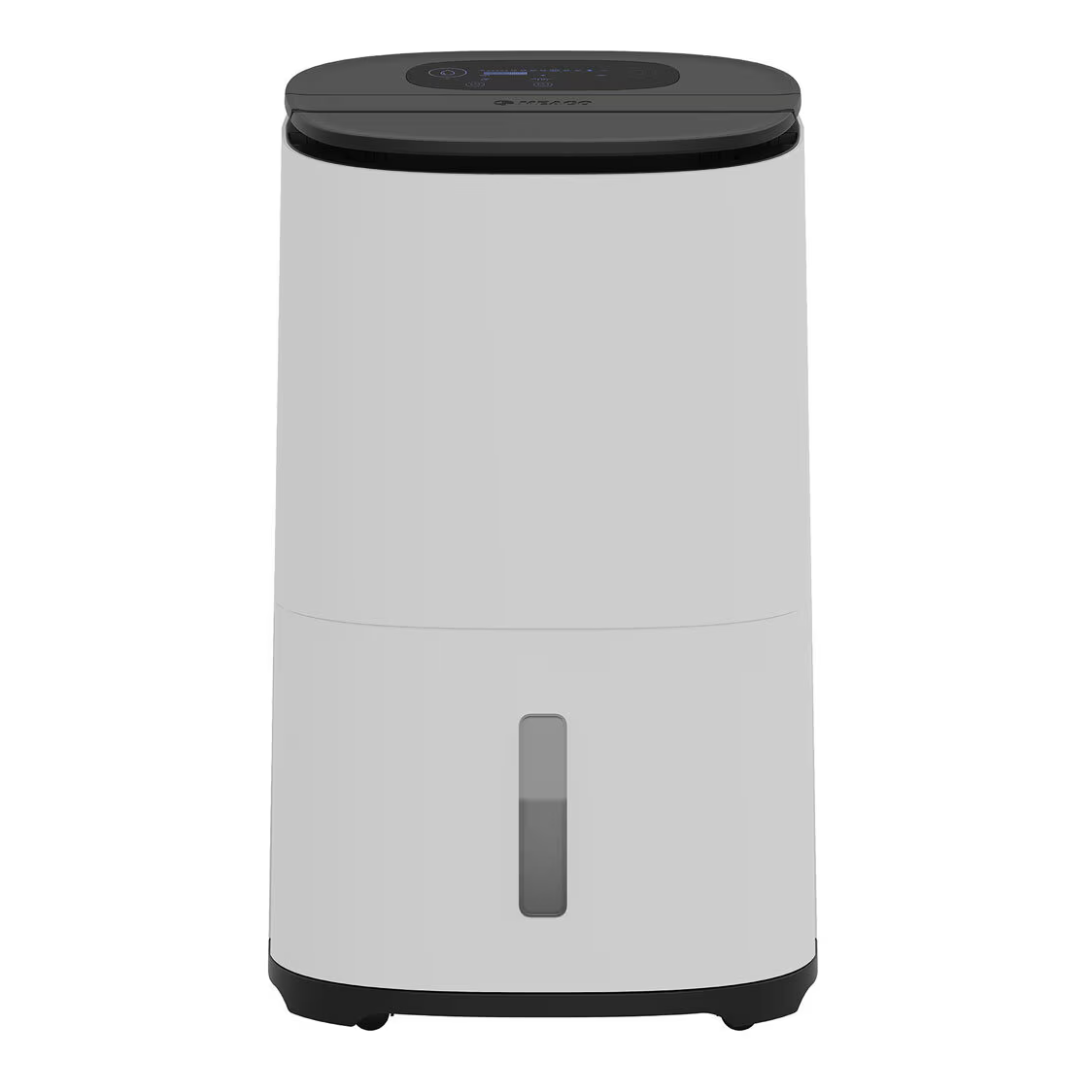
Best hybrid dehumidifier
For damp spaces and rooms, the MeacoDry Arete Two 12L Dehumidifier / Air Purifier is the best hybrid dehumidifier for the job.
We've updated our best dehumidifiers guide with a reviewers panel, an FAQ section and how we test information. We're also testing out new dehumidifiers which we'll add to this guide when we've fully reviewed them.
Best dehumidifiers 2025 ranked
The best dehumidifier overall
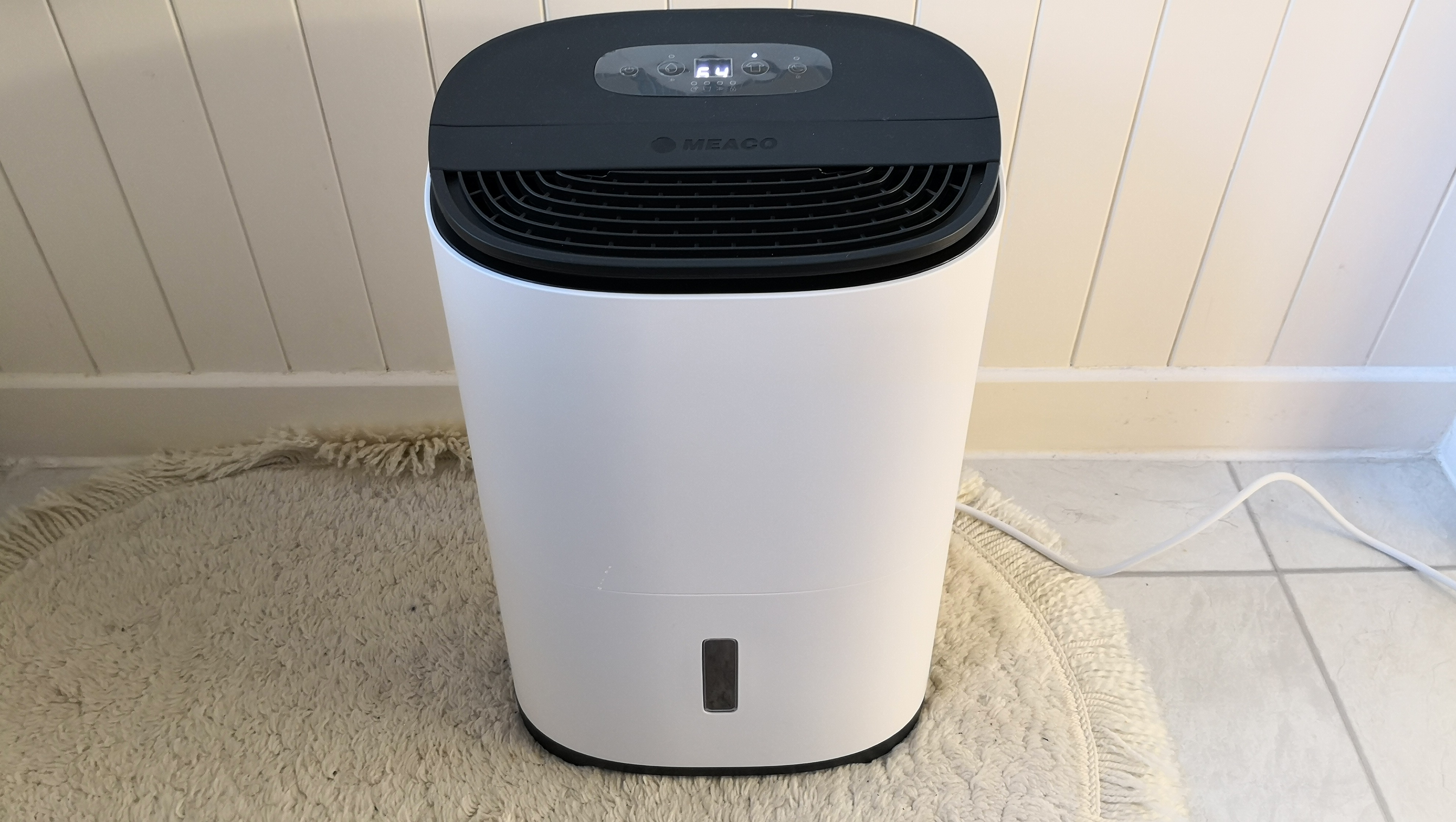

Specifications
Reasons to buy
Reasons to avoid
If you want an effective dehumidifier that’s simple to use, cost-effective to run, and doesn’t sound like a jet engine taking off then the MeacoDry Arete One 20L is the dehumidifier for you. Simply switch it on and choose Smart Humidity Mode and the Meaco will get to work lowering your humidity levels to a preset 55%. You can change the desired level from 40% to 70%.
Once the dehumidifier reaches your chosen level, the machine will switch itself off and kick back into action when it senses that humidity levels have risen back above the target. When the humidity is 15% above the target the Arete One will run at maximum fan speed to bring the humidity down as quickly as possible and when the humidity has been reduced below 15% it switches to the low fan speed so you get the best balance between fast dehumidification and low noise.
Speaking of noise levels, this machine puts out 40dB, which Meaco says is twice as quiet as the industry standard and means you can site it near or in a bedroom, depending on your tolerance to background noise. The machine also features laundry mode for drying clothes, night mode where it runs at a low fan speed with audible beeps and control panel lights switched off, continuous mode, and stand-alone air purifying mode.
Running costs are stated as 3.3p / hour (that’s 4.5 cents) based on 15.32p (21.02 cents) / kWh, and do remember that in Smart Humidity Control mode it’s unlikely that it will be running 24/7 unless your home has a serious damp problem. There’s no timer on this model but presumably that’s because the machine is more energy efficient if you leave it in Smart Humidity Mode.
There are some excellent, cheaper dehumidifiers in this list but if you have a damp problem, with mould appearing, you will find it's well worth paying the extra with this more powerful option for Meaco. Read T3’s full MeacoDry Arete One review for more information!
The best smart dehumidifier
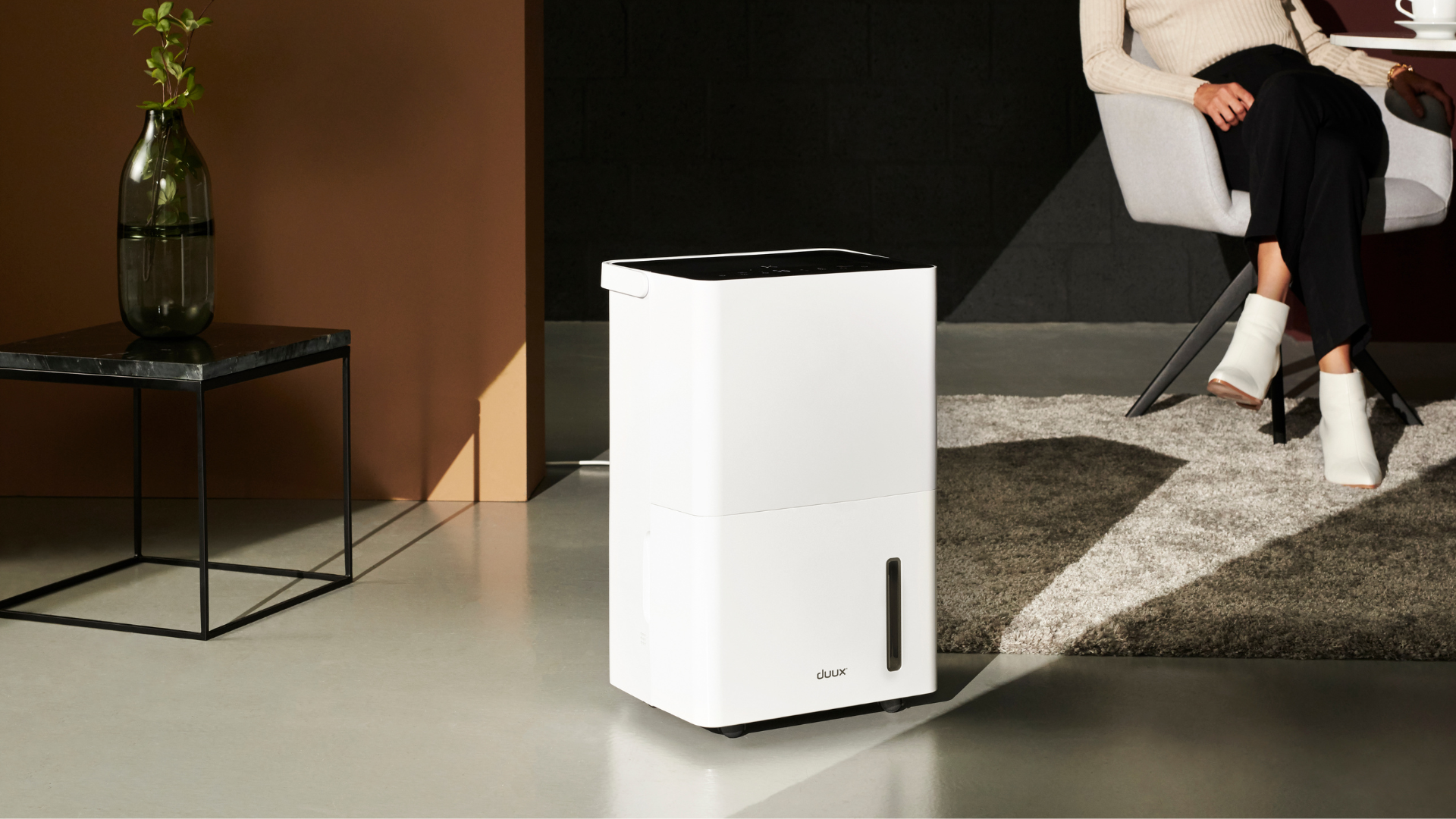

Specifications
Reasons to buy
Reasons to avoid
The Bora Smart 20L Dehumidifier by Duux is an impressive smart dehumidifier that's able to extract a significant amount of moisture in a short time. It has multiple features, including two operation modes, child safety lock and full water tank alerts. It's also easily transported thanks to built in wheels and a strong handle, making it perfect to move from room to room.
The smart element of the Bora works well when the device is often interacted with, but our reviewer found that it disconnected from the app often. That being said, the voice control did work well, so it depends on what you're looking for in a dehumidifier.
Read our full review of the Bora for more information!
The best hybrid dehumidifier
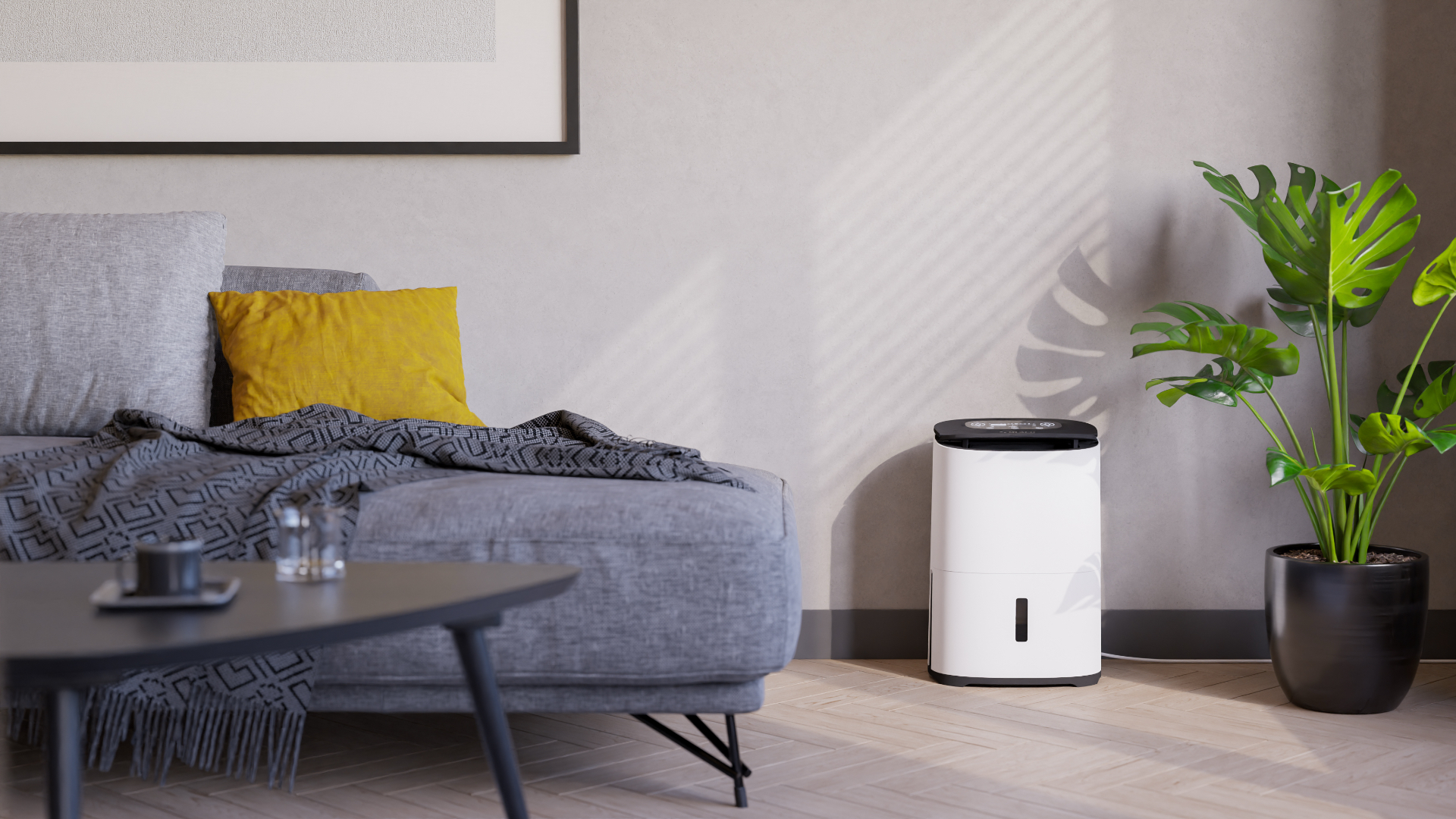

Specifications
Reasons to buy
Reasons to avoid
If you've been stuck between buying a dehumidifier or an air purifier, then the MeacoDry Arete Two is a great compromise. Our reviewer praised it for its efficient moisture control and energy-saving features, and was seriously impressed with its laundry drying setting and smart app connectivity.
Despite its weight, it performs quietly and effectively in smaller spaces, making it suitable for areas prone to dampness. There's also a larger 25L option if you're looking for something a little bigger.
Read our full review to find out more.
The best compact dehumidifier
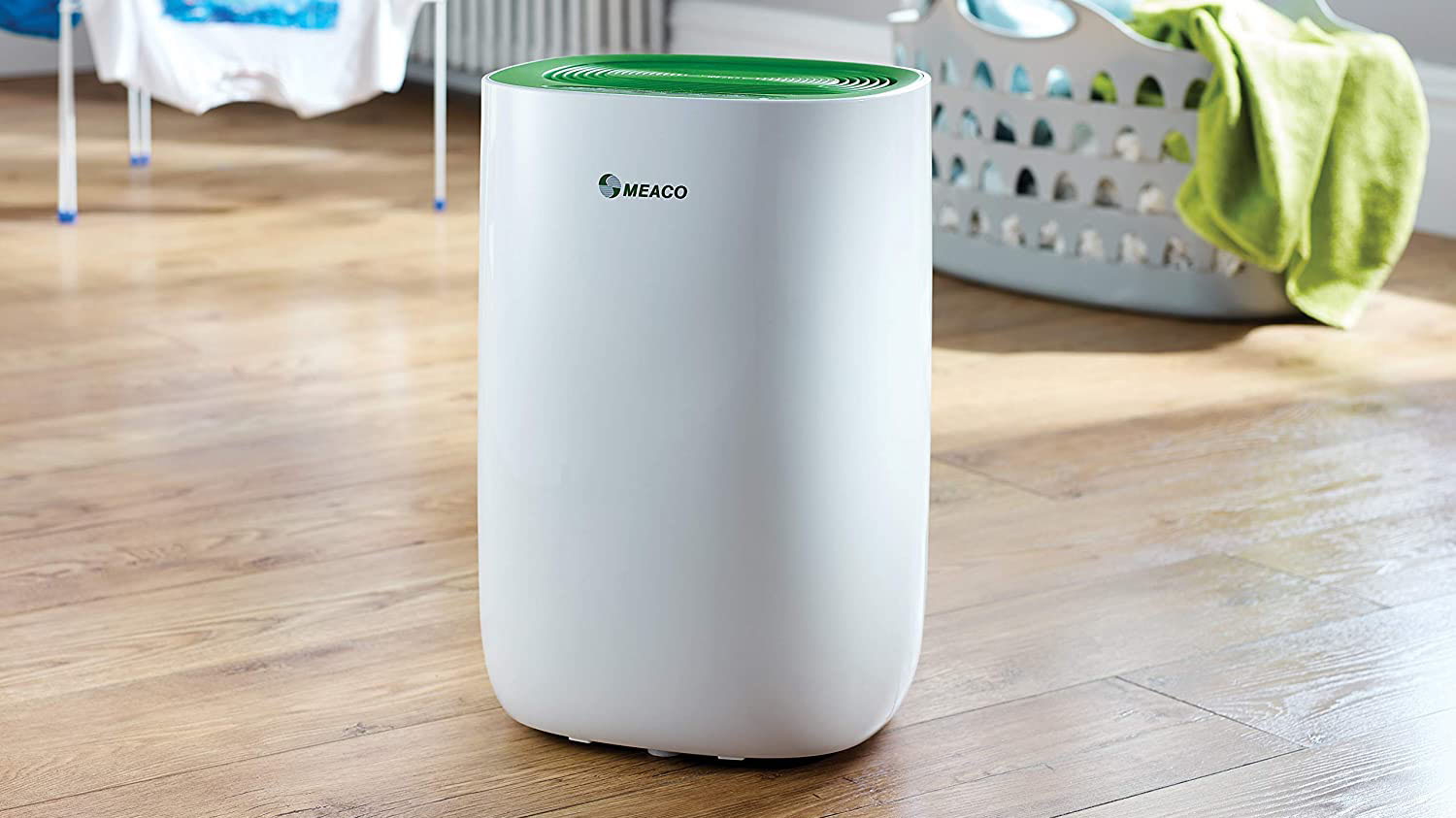

Specifications
Reasons to buy
Reasons to avoid
This 10-litre Meaco model is actually rather attractive for a dehumidifier and we definitely like the simple top-mounted interface. At just 46cm in height and 30cm in width, it’s not too big either and that makes it perfect for smaller rooms like bath and shower rooms – which is what it was ostensibly designed for.
This particular compressor model boasts a moisture extraction rate of 10.26 litres per day and comes with a 2.6-litre container which will need to be emptied from time to time (thankfully the unit turns itself off when full). However, a 12-litre and new 20-litre version are also available for those with bigger rooms.
The interface is a doddle to navigate and includes a humidistat button for selecting a target humidity, two fan speeds, a timer, a child lock and a laundry drying mode which runs the unit at full pelt for six hours before switching itself off. Don’t worry too much about running cost and noise because, being of the compressor variety, it not only burns just 2.45p worth of electricity per hour, it’s also amazingly quiet (up to 40dB), even with the fan at high speed.
If you’re looking for a small, attractive and exceedingly efficient dehumidifier that has garnered a wealth of favourable reviews, then stop right here. But if your room demands a much higher extraction rate, then check out its larger award-winning stablemate below. Have a look at T3's full MeacoDry ABC 10L review.
The best compact dehumidifier

Specifications
Reasons to buy
Reasons to avoid
This portable, two-litre capacity dehumidifier is just the thing for that damp storage area under the stairs, the dank end of your narrowboat or the mouldy kitchen cupboard next to the leaky washing machine. It measures just 29x48.5x17.5cm and weighs next to nothing so storage and placement won't be an issue.
Being of a dessicant nature (unlike the other models on this page which are all compressor types), you can run the EcoAir in any ambient temperature from 1˚C to 35˚C. On average, it sucks up around seven litres of moisture a day, which means you will have to get off your butt to empty the two-litre reservoir on at least three occasions – it cuts off automatically when it’s had its fill – but that’s hardly unusual for dehumidifiers. You could take the view that the smaller tank is lighter and easier to empty, even if you have to do so more frequently.
This new model ditches the slightly awkward bubble button fascia of its predecessor (see #7) in favour of an intuitive rotary humidistat with clearly labeled settings that even your cat could get a handle on: Lo, Med, Hi, and, for those who don’t have a tumble dryer, Laundry. It also has a fairly quiet setting for night-time work and a turbo function for full-on damp sapping efficiency. A deft mini moisture muncher.
The best cheap dehumidifier
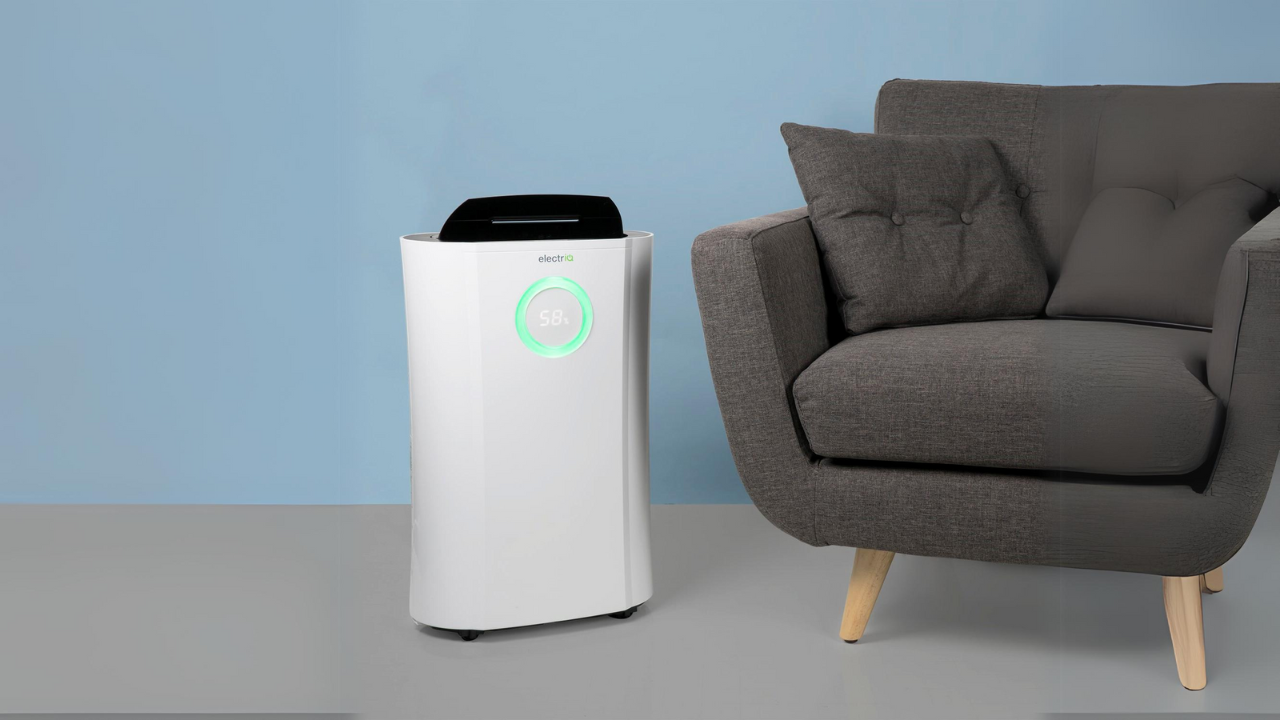
6. Electriq 10L Dehumidifier
Specifications
Reasons to buy
Reasons to avoid
You’re not going to see anything beautiful in this feature, but this wifi-enabled compressor model is at least a bit more stylish looking than most. It’s certainly a unanimous hit with users.
The Electriq uses very little energy and comes with an air purifier function replete with plasma ionizer and UV sterilisation for extra air-cleaning pizzazz. The Electriq’s water collection tank capacity is four litres; its extraction rate is up to 10 litres per day; it has a 24-hour timer and an operating temperature range of 5˚C to 35˚C.
The front of the unit also displays the level of humidity in the room – a handy visible feature that lets you know whether you should make any adjustments to the humidity setting. And even if you’re not in the same room, you can launch the iOS or Android app on your phone or tablet and check the humidity levels at home.
The Electriq is suitable for flats and homes with up to three bedrooms and is one of the cheapest and quietest models in this roundup. With a surfeit of glowing user reviews, perhaps this is the only dehumidifier average-sized homes may ever need.
The best large dehumidifier
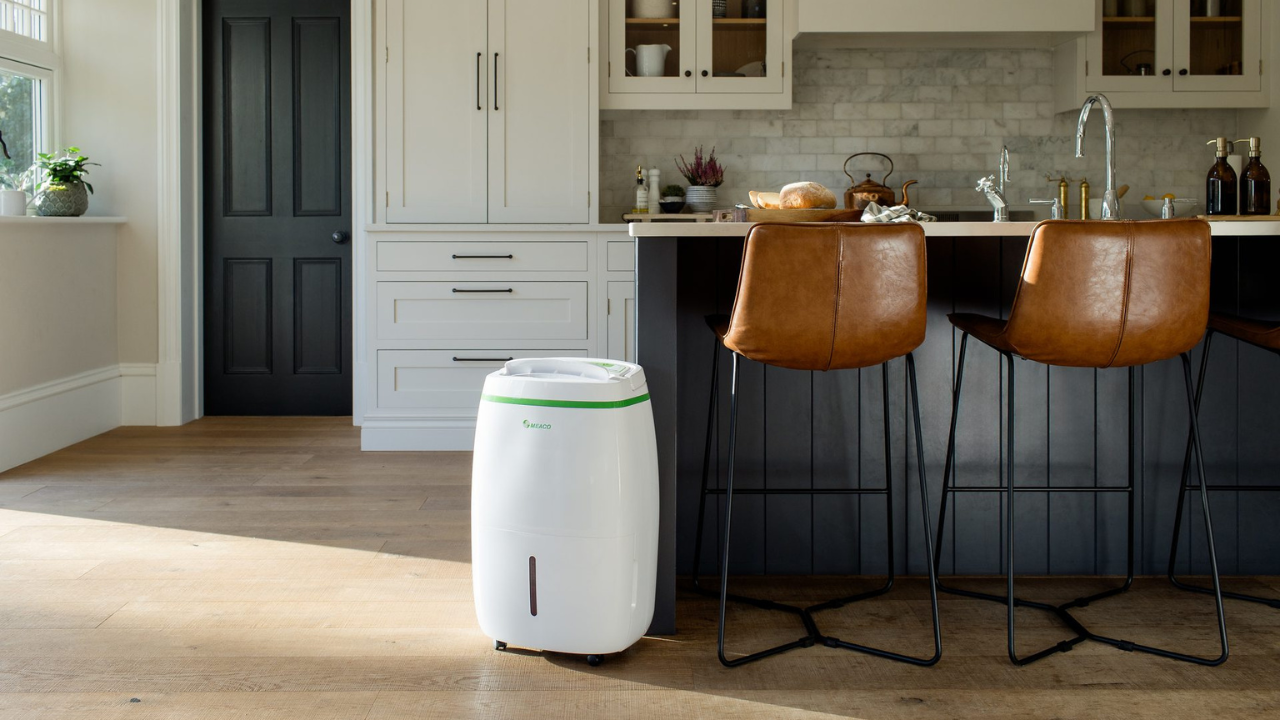
7. Meaco 25L Ultra Low Energy Dehumidifier
Specifications
Reasons to buy
Reasons to avoid
The Meaco 25L Ultra Low Energy Dehumidifier's stats certainly impress. It’s a DC inverter model for a start and that means exceptionally low running costs. In fact, Maeco says that the more you make it work, the more water it collects and the less electricity it will use. It's similar to using air-conditioning - if it runs 24/7 it's more economical.
This thing isn’t just for dealing with day-to-day damp issues either since it will also dry your clothes, perhaps not as quickly as a tumble dryer but almost certainly for a lot less wonga.
Despite its size (64cm x 38 x 29), it’s a genuine all-rounder. You can site it pretty much anywhere in the home (it’ll dehumidify a five-bedroom house), including the garage, the cellar, the bathroom and the laundry room. It’s also suitable for use in museums, apparently.
As with all dehumidifiers, the 25L’s extraction rate varies depending on the temperature and humidity in the room but, to use an extreme example, at a rather stifling 30˚C and 80% humidity it will absorb 24.96 litres in a 24-hour period. That’s a lot of water extracted from seemingly nowhere. Don’t worry about it overflowing either since it will switch off when the float in the five-litre water tank hits the top.
The best value dehumidifier
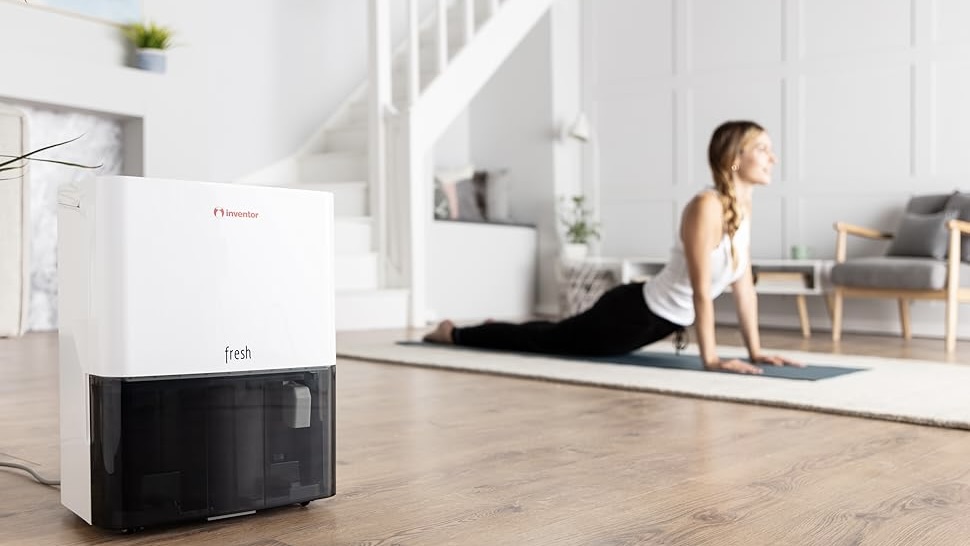
8. Inventor Fresh 12L/Day Dehumidifier
Specifications
Reasons to buy
Reasons to avoid
A British built dehumidifier that proves to be deceptively potent, with the ability to remove up to 12.1 litres of moisture a day. It features a compact design, that fits into rooms with ease, while the 2.1 litre collection tank isn’t the biggest but is ideal if you’re only interested in occasional emptying duties. The Inventor is also wonderfully easy to use, with a range of controls that include a digital humidity indicator.
In operation, the Inventor does emit a slight hum from the fan although it’s nothing to get too worked up about. There’s built-in air filtration though along with an automatic shut-off function just in case the tank gets full and you’re not around to empty it. The other boon with this machine is that it is reasonably lightweight at 11.4kg, which means you can easily move it to other rooms as and when it’s needed.
The automatic timer works a treat and adds value, while the continuous dehumidification mode is useful for any areas or rooms that are especially susceptible to damp or moisture. Overall, it’s a brilliant thing for the money.
How to choose the best dehumidifier
- Look at the size of your home and budget
- Consider the damp and mould in your house
- Brands like Meaco and Duux are most recommended
Dehumidifiers are not the most popular or glamorous of appliances, but they can be among the most useful. If you already have a good extractor fan in your bathroom or utility room you probably will never need one, although some people use them to dry clothing instead of a tumble dryer.
However, if you have a damp problem – and especially evidence of mould including flaking paintwork and crumbling plaster – then a dehumidifier is an essential purchase, at least until you can afford the necessary building repairs.
It’s not just your crumbling walls you need to worry about, it’s your health. Mould and fungus are a bad thing when confined indoors and are a recognised cause of respiratory problems including chest infections, allergies and asthma. A dehumidifier isn’t the ultimate cure, but it will dry out the offending area. It'll also help prevent mould spores from getting airborne and make things a little more habitable.
The really good thing about a dehumidifier is that you can easily see evidence of it working. Just peer into the water collection container and you’ll likely be amazed at how much moisture it has extracted from thin air (up to 25 litres a day with some models). Every so often you’ll need to empty the water container, although all of these models will switch themselves off when full.
How we test the best dehumidifiers
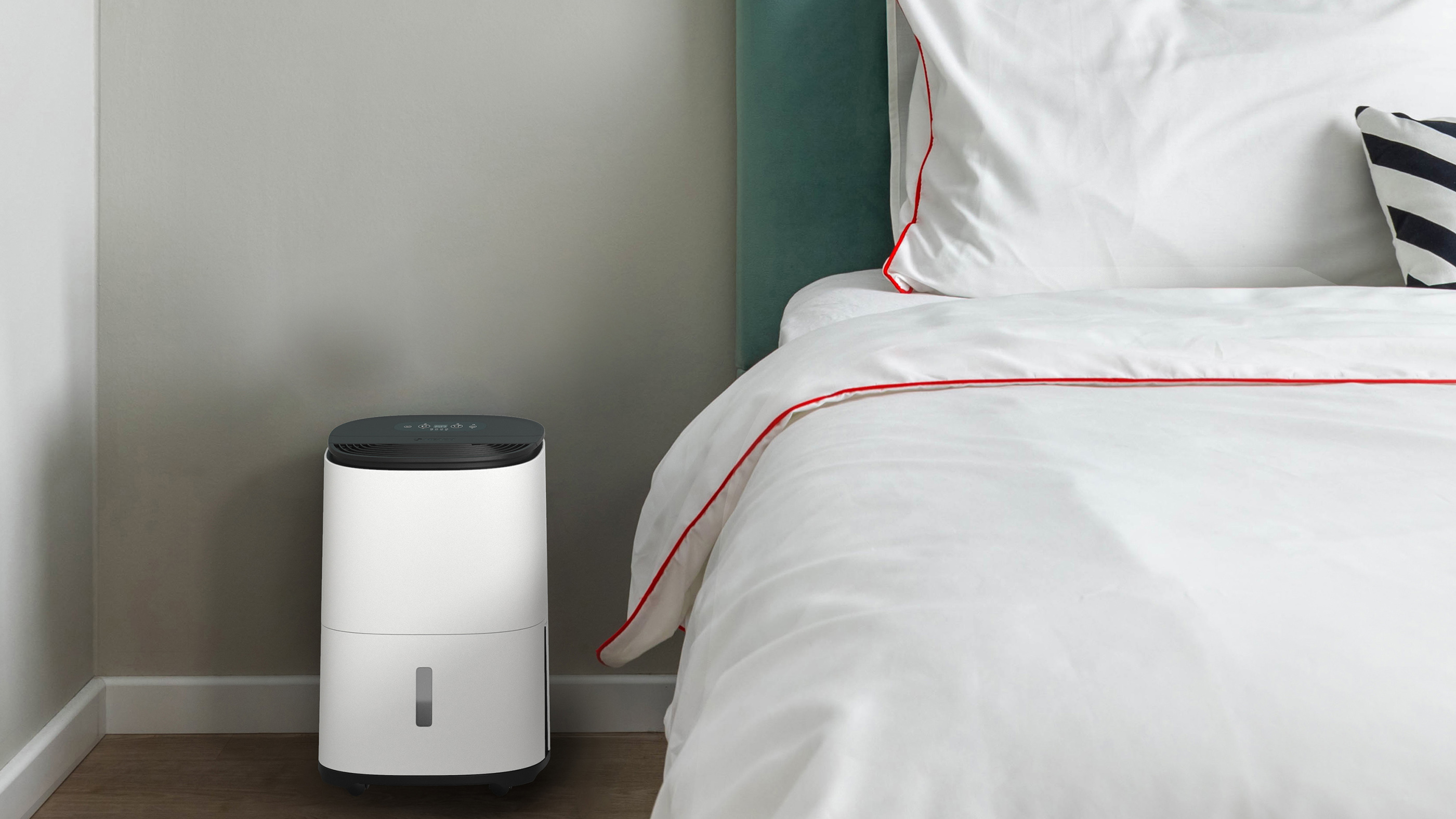
- Reviewing dehumidifiers involves testing the design, set-up, portability, size, price and effectiveness
When it comes to testing the best dehumidifiers, we call in the latest models and put them through their paces. This includes setting them up, their design and size, how easy they are to move around, and much more.
Of course, the most important thing about dehumidifiers is how they 'cure' damp. We keep a close eye on how much moisture they extract from the air, how often they need emptying (and how easy it is to do that), if they leave any odour, and their controls.
Once we finish testing the best dehumidifiers, we publish a thorough review and come back to it as we continue to test them, so you have full transparency of how it performs.
See how we test at T3 for more details.
FAQs
What is a dehumidifier?
A dehumidifier is a corded or cordless device that sits in your home and works to remove moisture from the air. They're typically used to prevent mold and mildew, and can improve the air quality in your home.
See our full article on what is a dehumidifier for more.
What is the difference between a humidifier and a dehumidifier?
- A dehumidifier removes moisture from the air
- A humidifier adds moisture to the air
The difference between a humidifier and a dehumidifier is pretty self-explanatory but we'll explain it anyway. A humidifier adds moisture to the air while dehumidifiers remove it from the air.
Humidifiers are mainly used during the winter or in dry climates and they release water vapor into the air to help with allergies, respiratory issues and dry skin.
What types of dehumidifier are there?
- There are two types: compressor and desiccant
There are two main types of dehumidifier: compressor or refrigerant and desiccant. We have a full explainer on whether you should choose a compressor or desiccant dehumidifier if you want more details.
According to a horde of experts, desiccant models can operate consistently at temperatures from 1ºC to 30ºC, but use more energy than compressors, which work best at around 20ºC – but then, as good luck would have it, that happens to be the average UK household temperature.
Reviewer panel

Lizzie is T3's Home Staff Writer. Believe it or not, Lizzie is a huge fan of dehumidifiers, probably because she knows the horrors that damp and mould can bring. If she's not writing about new dehumidifier launches, she'll be reviewing the latest model, and her top picks can be found above.

Derek has been writing for more years than he can remember, but for T3, he specialises in all things outdoors and home. He's tested plenty of dehumidifiers, air purifiers and fans, and is a big fan of Meaco.

Rob Clymo has been a tech journalist for more years than he can actually remember. He's tested almost any home appliance you can think of, including dehumidifiers from Meaco, EcoAir and more.
Get all the latest news, reviews, deals and buying guides on gorgeous tech, home and active products from the T3 experts
Derek (aka Delbert, Delvis, Delphinium, Delboy etc) specialises in home and outdoor wares, from coffee machines, white appliances and vacs to drones, garden gear and BBQs. He has been writing for more years than anyone can remember, starting at the legendary Time Out magazine – the original, London version – on a typewriter! He now writes for T3 between playing drums with his bandmates in Red Box (redboxmusic).
- Rob Clymo
- Lizzie WilmotStaff Writer, Home



